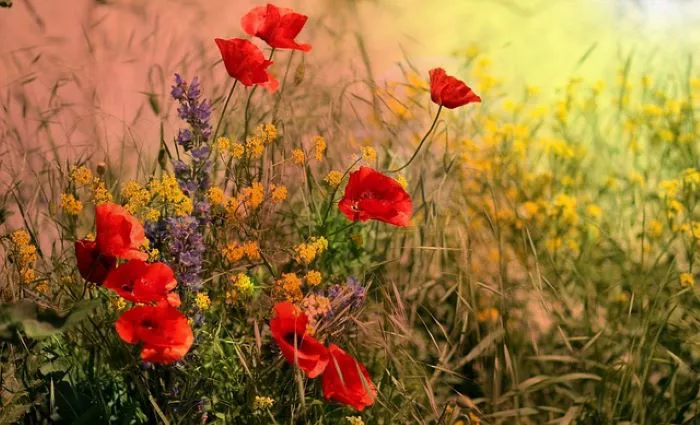Wildflowers are a vibrant and essential part of our natural landscapes. They bring beauty to meadows, forests, and fields while providing critical habitats for various wildlife. Understanding where wildflowers come from involves exploring their origins, ecological roles, and the factors that contribute to their growth and distribution. This article will examine the sources of wildflowers, their ecological importance, and how they adapt to different environments.
The Origins of Wildflowers
Wildflowers have diverse origins that reflect the history of our planet. They have evolved over millions of years, adapting to various climates, soil types, and ecological conditions. Most wildflowers are native to specific regions, meaning they have developed in particular geographic areas without human intervention.
Evolutionary History: The ancestors of modern wildflowers date back to ancient plant species. Over time, these plants have evolved through natural selection, adapting to their environments. This evolutionary process has led to the vast diversity of wildflower species we see today.
Geographic Distribution: Wildflowers are found on every continent except Antarctica. They thrive in a variety of ecosystems, including grasslands, forests, deserts, and wetlands. Each species is adapted to its specific environment, which influences its growth habits, flower shape, and color.
Native vs. Non-native Species: Native wildflowers are those that have naturally occurred in a specific area for thousands of years. Non-native wildflowers, on the other hand, are introduced species that may have been brought in by humans for ornamental purposes or agricultural use. While some non-native species can become invasive, native wildflowers play a crucial role in maintaining ecological balance.
Ecological Importance of Wildflowers
Wildflowers are not just beautiful; they serve vital ecological functions. Their presence in ecosystems contributes to biodiversity and supports various forms of wildlife.
Habitat for Pollinators: Wildflowers provide essential food sources for pollinators such as bees, butterflies, and hummingbirds. The nectar and pollen from wildflowers are crucial for the survival of these species. In turn, pollinators help in the reproduction of many plants, including agricultural crops.
Soil Health: Wildflowers contribute to soil health by preventing erosion and improving soil structure. Their roots help bind the soil together, reducing the risk of erosion during heavy rains. Additionally, wildflowers can enhance soil fertility by fixing nitrogen and adding organic matter when they die and decompose.
Support for Wildlife: Many animals rely on wildflowers for food and shelter. Birds, insects, and small mammals find sustenance in wildflower-rich areas. By supporting diverse plant life, wildflowers help maintain healthy ecosystems that can sustain various animal species.
Factors Influencing Wildflower Distribution
Several factors determine where wildflowers grow and thrive. Understanding these factors can help us appreciate the complexity of wildflower habitats.
Climate: Climate plays a significant role in the distribution of wildflowers. Temperature, precipitation, and seasonal changes affect which species can survive in a given area. For example, desert wildflowers are adapted to withstand extreme heat and drought, while those in temperate regions thrive in more moderate conditions.
Soil Type: The type of soil in an area can influence the growth of wildflowers. Some species prefer sandy soils, while others thrive in clay or loamy soils. Soil pH and nutrient content also play critical roles in determining which wildflowers can grow successfully in a particular location.
Sunlight and Water Availability: Wildflowers require adequate sunlight and water to grow. Species that thrive in sunny environments will struggle in shaded areas. Similarly, some wildflowers are adapted to wet conditions, while others prefer dry, well-drained soils.
Human Activity: Human actions can significantly impact wildflower populations. Urbanization, agriculture, and land development can lead to habitat loss for wildflowers. Conversely, conservation efforts and the establishment of protected areas can help preserve native wildflower populations.
Cultivation and Conservation of Wildflowers
As interest in gardening and conservation grows, many people are seeking to cultivate wildflowers in their own spaces. Understanding the origins of wildflowers can aid in successful cultivation and conservation efforts.
Choosing Native Species: When planting wildflowers, it is essential to select native species that are well-adapted to the local environment. Native wildflowers require less maintenance and are more likely to thrive without the need for chemical fertilizers or pesticides.
Creating Habitats: Gardeners can create habitats that support wildflower growth by providing the right conditions. This includes preparing the soil, ensuring adequate sunlight, and maintaining proper moisture levels. Incorporating a variety of wildflower species can attract a diverse range of pollinators and wildlife.
Conservation Efforts: Many organizations focus on conserving native wildflower populations and their habitats. These efforts include habitat restoration, seed banking, and educational programs to raise awareness about the importance of wildflowers in ecosystems.
Conclusion
Wildflowers originate from a rich evolutionary history and are adapted to thrive in various environments. They play essential roles in ecosystems, supporting pollinators, improving soil health, and providing habitat for wildlife. Understanding the factors that influence their distribution can help us appreciate the complexity of wildflower habitats. By cultivating native wildflowers and supporting conservation efforts, we can contribute to the preservation of these beautiful and vital plants for future generations.


